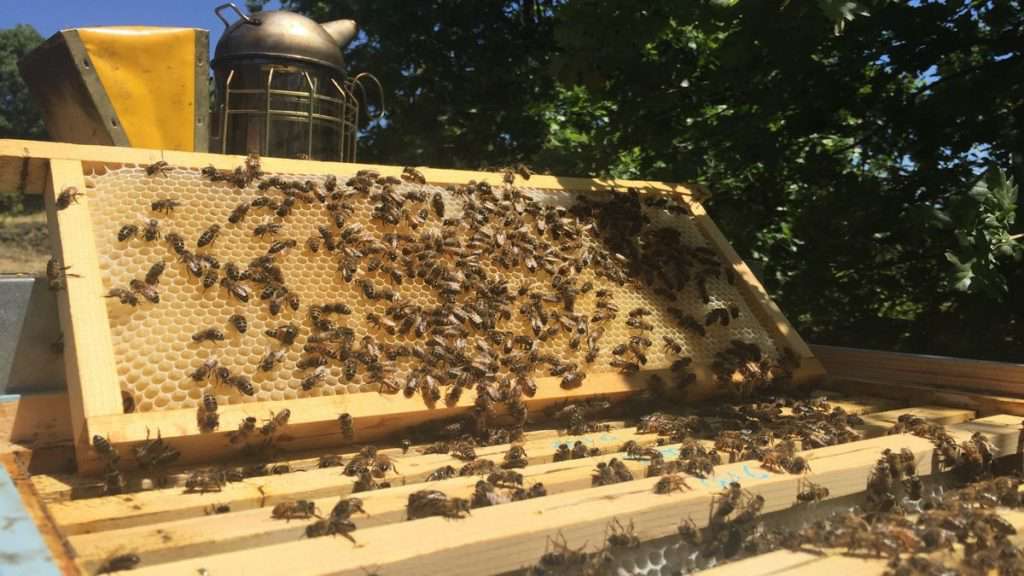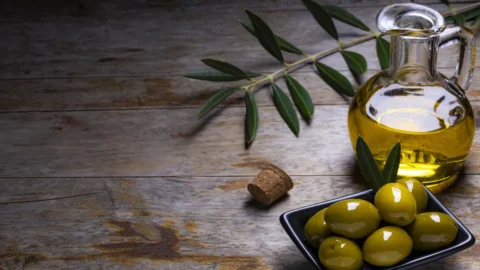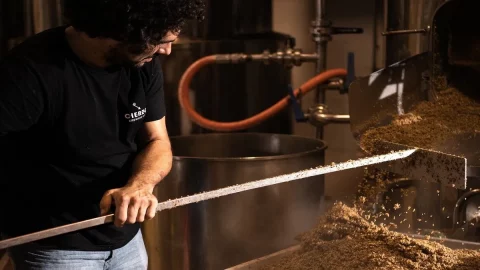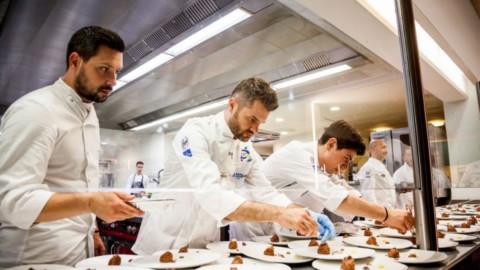There are those who love nature, there are those who defend nature and there are those who want to bring nature back to how it once was, to how our ancestors handed it down to us, at least to how our ancestors still told us about it. our grandparents, that nature which, unfortunately, day after day, is disappearing due to industrial activities, an economy that ignores the habitat, a man who condemned it to death with his senseless actions, forgetting that nature it is the main ally of his health, as the dramatic health reports in these days of coronavirus show us.
If the first two categories are worthy of the third category belongs to a people that we could define as visionaries, prophets of a world of bioviersity to be recreated and refounded who often have to collide with skepticism, irony, mockery of the majority, and for this reason even more worthy because devoted to sacrifice.
Undoubtedly this third category includes by right a thirty-eight-year-old ex mechanical expert from Sicily who for love of nature threw away – the term is more appropriate than ever – the degree in mechanical engineering he was about to take, struck by the desire to live away from the city and from its polluting mechanisms to devote himself to a completely natural life. The opportunity was offered to him by a winemaker who had embarked on the production of natural wines, which were still not as widespread as they are today.
And so it was that Giuseppe Lazzaro, the first of three brothers, the others are called Simone and Gianluca, from Macchia di Giarre, a fraction half an hour's drive from Catania, between the sea and the slopes of Etna, abandoned his studies to find yourself producing wines without herbicides, without sulphites, without lightening agents, studying the vines in their natural production process.
black bee of Sicily
One thing struck him above all others: the discovery that a particular bee, known for its meekness, commonly called the Black Bee, whose scientific name is Apis Mellifera Sicula, coming from Africa and which had resisted for millennia on the island , which survived the glaciations, but not man, practically disappeared in 1970 after local beekeepers preferred the more profitable Apis Mellifera Ligustica, originally from northern Italy. A bee particularly valued for its ability to adapt to most climates and able to offer abundant honey harvests.
For this reason the beekeepers of the island had gradually abandoned its breeding and the production of honey with the traditional ferula wood ashlars preferring the mobile honeycombs with Ligustre, undoubtedly much more profitable.
For Peppe Lazzaro that black bee almost became an obsession, he could not rest but an insect that had worked for millennia in that habitat, pollinating flowers, making a fundamental contribution to the insular food chain, providing honey to generations and generations of islanders , could have evaporated.
He inquired with the main beekeepers in the area, but no one knew anything about it. Someone even told him that it was just a legend: "the Sicilian black bee - it was the easy sentence of those who proceed for certainties and never for doubts - does not exist".

Etna
Obviously Peppe Lazzaro did not give up in the slightest. He continued to study, to document himself until his destiny intersected with that of Carlo Amodeo, a charismatic name for Sicilian beekeeping, a beekeeper from Termini Imerese who had studied with a Sicilian entomologist Pietro Genduso who had dedicated years of studies to Black Bee after the classification made by Montagano in 1911. Amodeo 30 years ago had identified the last bugni of Sicilian black bees in a beam of Carini where an old beekeeper farmer produced honey with that ancient system. The ashlars contained some families of bees that Carlo Amodeo had kept in isolation on the islands of Vulcano and Filicudi.
From there a project funded by the Sicily Region and followed by the CRA-API of Bologna (the Council for Research and Experimentation in Agriculture, Apiculture Research Unit) started in collaboration with the University of Catania and Palermo, the Zooprophylactic Institute of Sicily, the Soat of Collesano and Slow Food for which Amodeo had started the repopulation of this type of bee in western Sicily on the basis of the fact that in this area there is a scarce presence of beekeepers and this in order to avoid hybridization of the Black Bee with the Mellifera Ligustica and guarantee its pure production.
Imagine the enthusiasm of Giuseppe Lazzaro when he discovered that the Black Bee still existed and had not disappeared. He packed his bags, got into the car and rushed to Carlo Amodeo's. It wasn't easy at first to be able to meet him. After repeatedly insisting, he managed to be welcomed to his company for a visit, it was October 2010. The visit to that company had opened him to a new world! Six months later in April Lazarus returns to him to take his first 6 hives of Sicilian black bees.
Meanwhile in Giarre, in the garage of his house he had already built the hives and everything he needed to embark on this journey. He talked about it with the brothers, convinced them to embark on the enterprise by setting up a small company with a processing laboratory, small but studied in detail "with the mission of bringing back to Etna this marvelous breed which had now completely disappeared for over 40 years". It was 2013.
The chosen name immediately makes you understand the intentions of Peppe and his brothers: "The guardians of the Black Bee", and already because the breeding of black bees in Giarre, rigorously in collaboration with the Faculty of Agriculture of the University of Catania, requires much more commitment and sacrifice than those of eastern Sicily and also considerable economic resources. Here, due to the large presence of beekeepers in the area, the risk of hybridization with Apis Ligustica is much higher.
“The fact of having apiaries of other breeds in our area - says Lazzaro - makes life very difficult for us, because we are unable to reproduce in our colonies with an acceptable level of purity. They hybridize. To overcome this, every year, we turn to the Sicilian farms located in the Palermo area, where a massive presence of this breed allows the reproduction of the same with a level of purity that exceeds 90%. All of this comes at a huge cost!”
But the Lazzaros did not give up and the number of hives could go from the initial 6 to 100 within a few years.
Giuseppe studies the "bee spaces" in depth, and designs a hive so that the bees, inside it, feel as much as possible in their natural state, adopts technical devices to avoid the use of chemical treatments, to counteract infections and diseases caused by the scarce hygiene. Finally after a few years he can start the production of a qualitatively excellent honey production.
"Our working method is "extreme" - he declares with double pride as a beekeeper and as a Sicilian - we are extreme in everything: on the choice of wood with which the hives are made, on the positioning and exposure of the apiaries, on the care of the hygiene of the whole production process, on the placing in jars, rigorously manual, and in jars of maximum 150g. (a larger volume would be consumed in too long, with inevitable loss of quality) Everything is treated with extreme attention".
The philosophy of the house is strictly based on respect for nature, its laws and its times: the beehives are conducted respecting the very nature of the bees, without forcing, without chemicals or antibiotics of any kind.
A rigorous production protocol dictates the rules with the aim of keeping intact all the organoleptic, nutraceutical and medicinal properties possessed by honey which has a very high content of polyphenols and antioxidants and at the same time safeguarding all the natural processes and the health of the bees.
In this way the supers are recovered without the use of high pressure air blowers or chemical products. The bees are gently removed from the combs with "bee field" systems in a natural way and without any trauma or death. To prevent the high temperatures from deteriorating the nectar collected by the bees, it is sometimes preferred to extract the supers from the hives without waiting for them to be completely full. “The company focuses on product quality rather than quantity: we produce a maximum of 1000-1500 kg of honey per year”
Thanks to the innovative use of inert gases during the honey extraction and storage process (phase in which the honey undergoes the greatest degradation because it is subjected to inevitable oxidation) Lazzaro manages to guarantee the integrity of all the properties that honey possesses " as if we were eating it directly from the hive”. Furthermore, all honeys have a percentage of water not exceeding 16-17% to avoid fermentation phenomena.
The guardians of the black bee thus produce five-star products with a unique flavour, such as aromatic and dense oak honeydew honey, rich in calcium, magnesium, sodium and potassium, and probiotic bacteria and aromatic citrus honeydew honey and thick, an excellent source of iron, calcium, magnesium, sodium and potassium, probiotic bacteria both excellent as a sweetener for herbal teas or teas or savory dishes with soft or aged cheeses. Above all, a triumph of atavistic, Sicilian flavours, very rare and not always obtainable, depends on the climatic trend.
And yet the wildflower honey, produced on the northern slope of Etna, at about 700 m above sea level between April and the first weeks of August, divided into different lots based on the dominant flowering of the moment. In the first period the dominant flowering is the Asphodel followed by the Ferula then it alternates with the Thistle with a medium aromatic intensity flavor, between fruity and floral with a slight acidity which can also be slightly pungent universally multipurpose in the kitchen
Today Peppe Lazzaro can look back and with great satisfaction retrace the path stubbornly made in these ten years of hard work. In his small way he is a great example for everyone, he managed to enrich the value of biodiversity in his territory by reintroducing an animal species in danger of extinction, the Black Bee on the slopes of Etna, he managed to produce a honey now sought after by Chef gourmet and the most prestigious pastry shops, has shown that the combination of man and nature can be productive and non-destructive, that nature knows how to reward those who know how to appreciate it. A lesson to keep in mind these days.
The Keepers of the Black Bee
Company Agr. Lazarus
Via Risorgimento, 131
Scrub of Giarre 95014 (CT)
E-mail : info@icustodidellapenera.it
tel.: 3475180771






